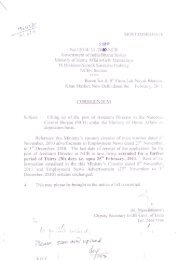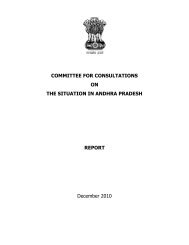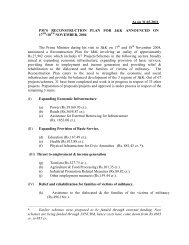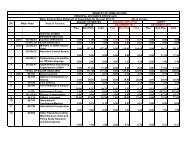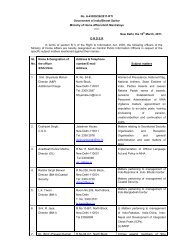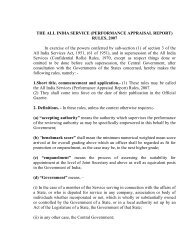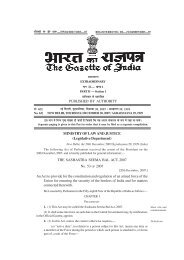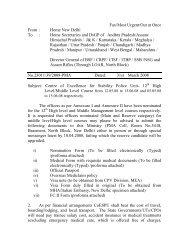Dr. Justice V.S. Malimath Report First pages - Ministry of Home Affairs
Dr. Justice V.S. Malimath Report First pages - Ministry of Home Affairs
Dr. Justice V.S. Malimath Report First pages - Ministry of Home Affairs
Create successful ePaper yourself
Turn your PDF publications into a flip-book with our unique Google optimized e-Paper software.
182<br />
under the weight <strong>of</strong> case burden and a thorough overhaul is essential to make it<br />
speedy, efficient as well as cost-effective.<br />
15.1.4 If the Criminal <strong>Justice</strong> System were to increase its efficiency in<br />
rendering justice and become as quick as it is fair, it would restore the<br />
confidence <strong>of</strong> the people in the system. Towards this, it is necessary to not only<br />
re-classify crimes but re-classify them in such a manner that many <strong>of</strong> the<br />
crimes- which today take up enormous time and expense- are dealt with<br />
speedily at different levels by providing viable and easily carried out<br />
alternatives to the present procedures and systems. In brief, many infractions <strong>of</strong><br />
the law which are classified as crimes today - and some considered serious, may<br />
not be so considered tomorrow.<br />
15.2 CLASSIFICATION OF CRIMES/OFFENCES<br />
15.2.1 The basis for the classification <strong>of</strong> crime is that contained in the<br />
Indian Penal Code (IPC) and the Criminal Procedure Code (Cr.P.C). But, over a<br />
period <strong>of</strong> time, various statutes have been added with different provisions about<br />
evidence, burden <strong>of</strong> pro<strong>of</strong> etc., and <strong>of</strong>ten, the crimes themselves are not <strong>of</strong> the<br />
kind covered in the IPC; in fact, many <strong>of</strong> the special laws relate to social<br />
inequities. All these have only added to the burden <strong>of</strong> work on the Criminal<br />
<strong>Justice</strong> System. Further, with the changing views <strong>of</strong> what constitutes crime all<br />
over the world and not just in India, unless there is a re-look at the classification<br />
also, it will be difficult to work out appropriate prevention and detention<br />
strategies for different kinds <strong>of</strong> <strong>of</strong>fences which are now clubbed together as<br />
crime. Under the Code, <strong>of</strong>fences are broadly classified into four categories as<br />
indicated in the following paragraphs.<br />
15.3 Cognizable Offences<br />
15.3.1 Cognizable <strong>of</strong>fences are <strong>of</strong>fences for which a police <strong>of</strong>ficer may<br />
arrest without warrant and without the orders <strong>of</strong> a magistrate. In non-cognizable<br />
<strong>of</strong>fences, a police <strong>of</strong>ficer cannot, in general, arrest a suspect without warrant or<br />
without the orders <strong>of</strong> a magistrate. The police <strong>of</strong>ficer can entertain only<br />
cognizable <strong>of</strong>fences and the victim <strong>of</strong> a non-cognizable <strong>of</strong>fence has to move the<br />
court with a complaint. This distinction deserves to be done away with.<br />
15.3.2 Offences are classified as bailable and non-bailable: A bailable<br />
<strong>of</strong>fence is one in which the accused has a right to be released on bail. In a nonbailable<br />
<strong>of</strong>fence, the court can refuse bail to the accused.



